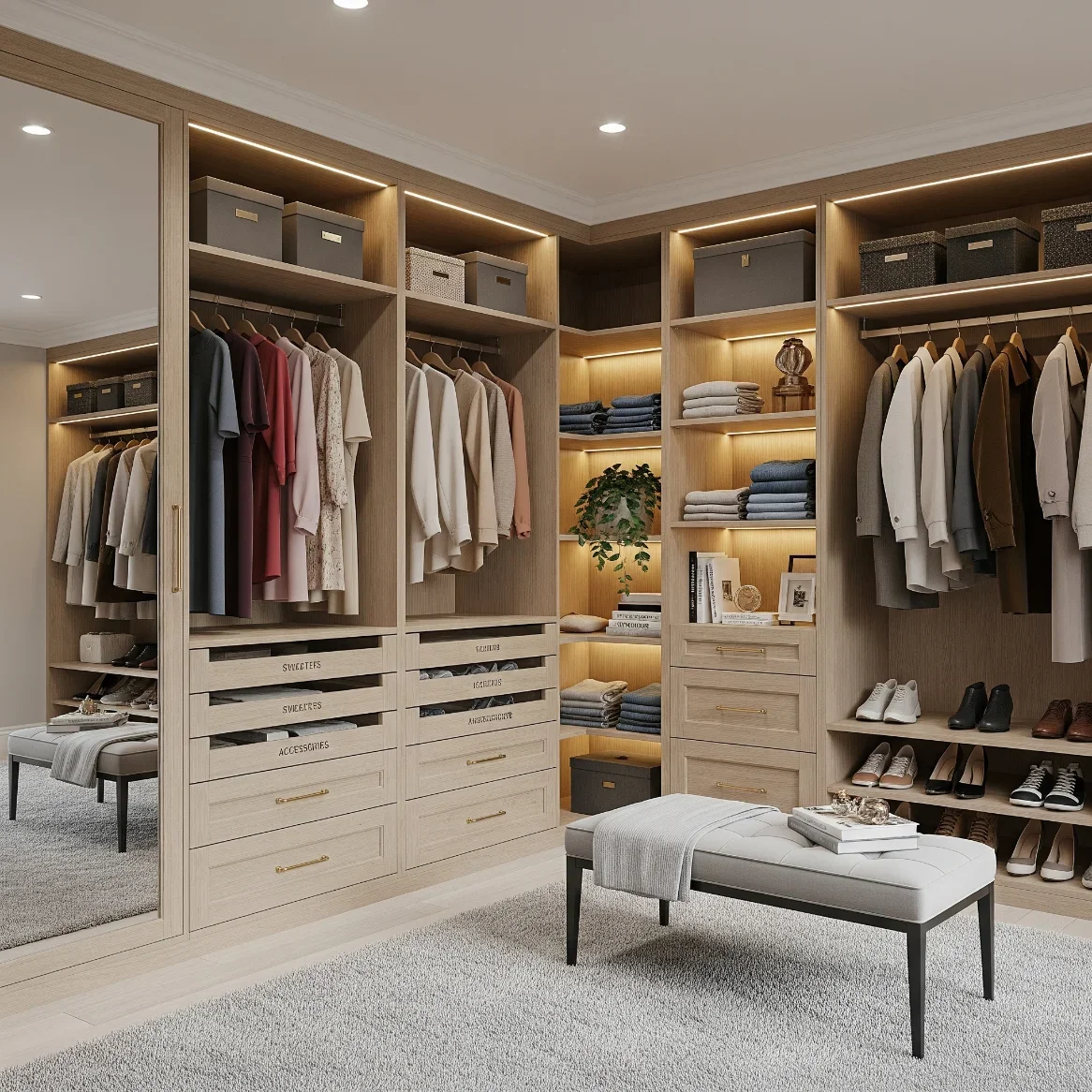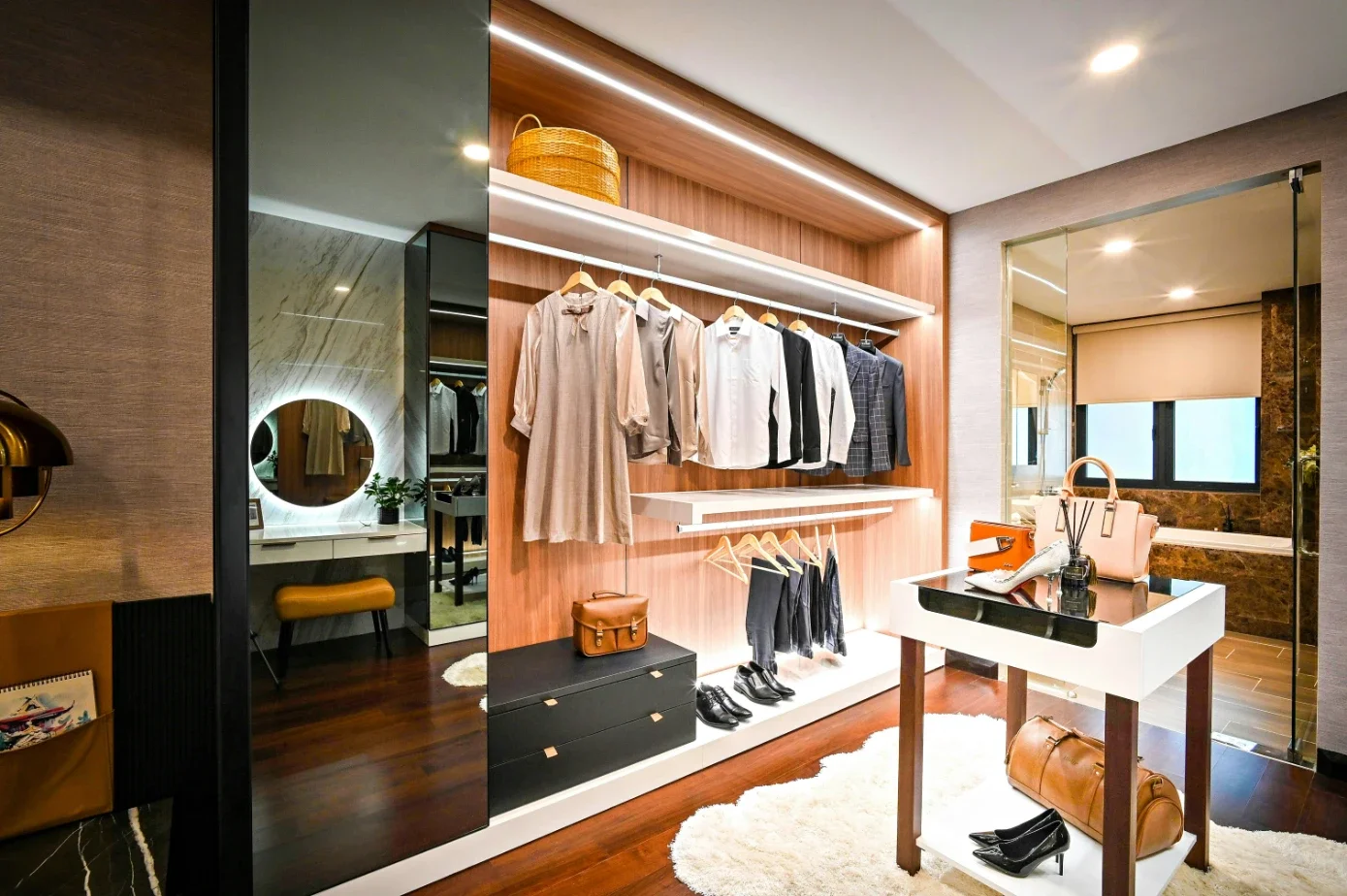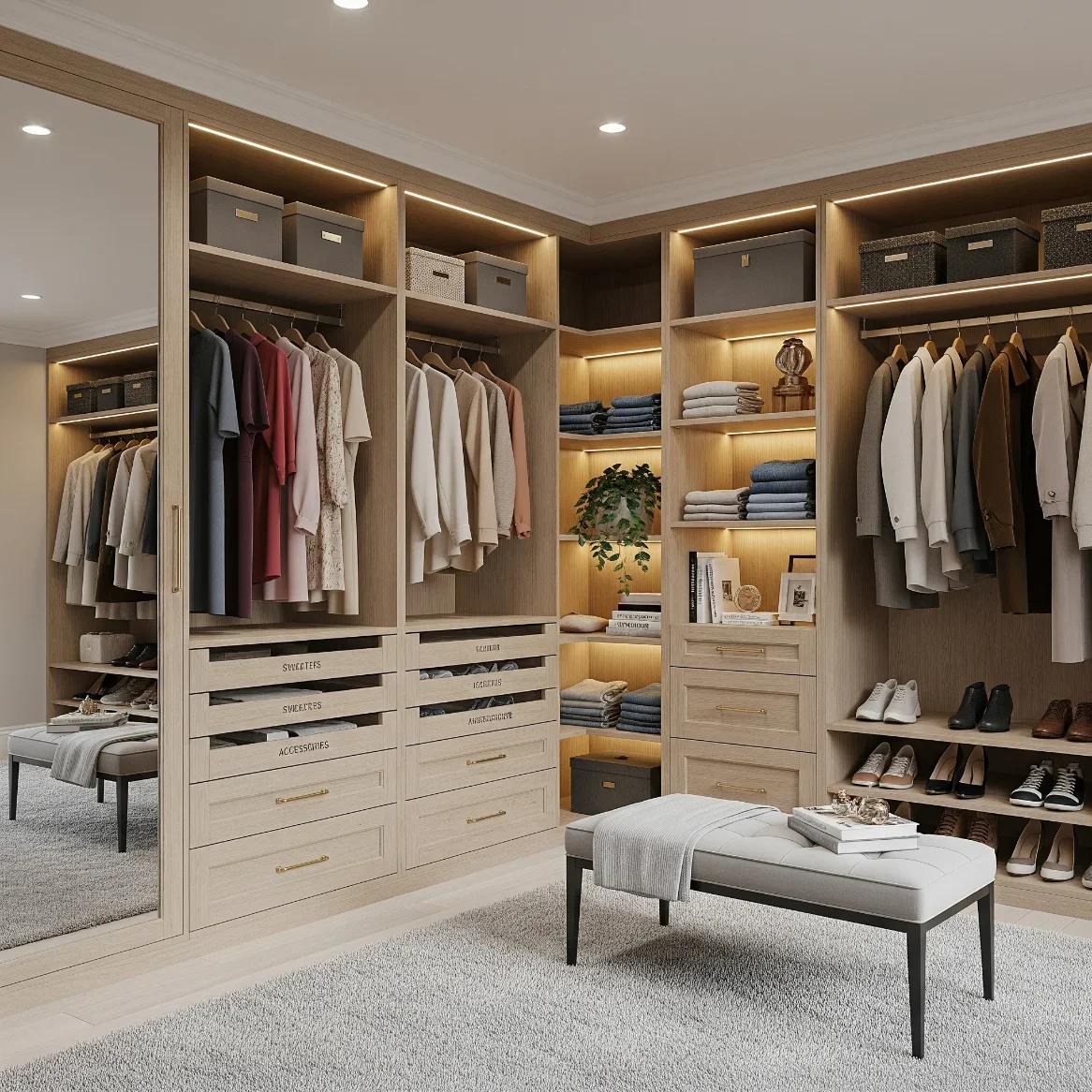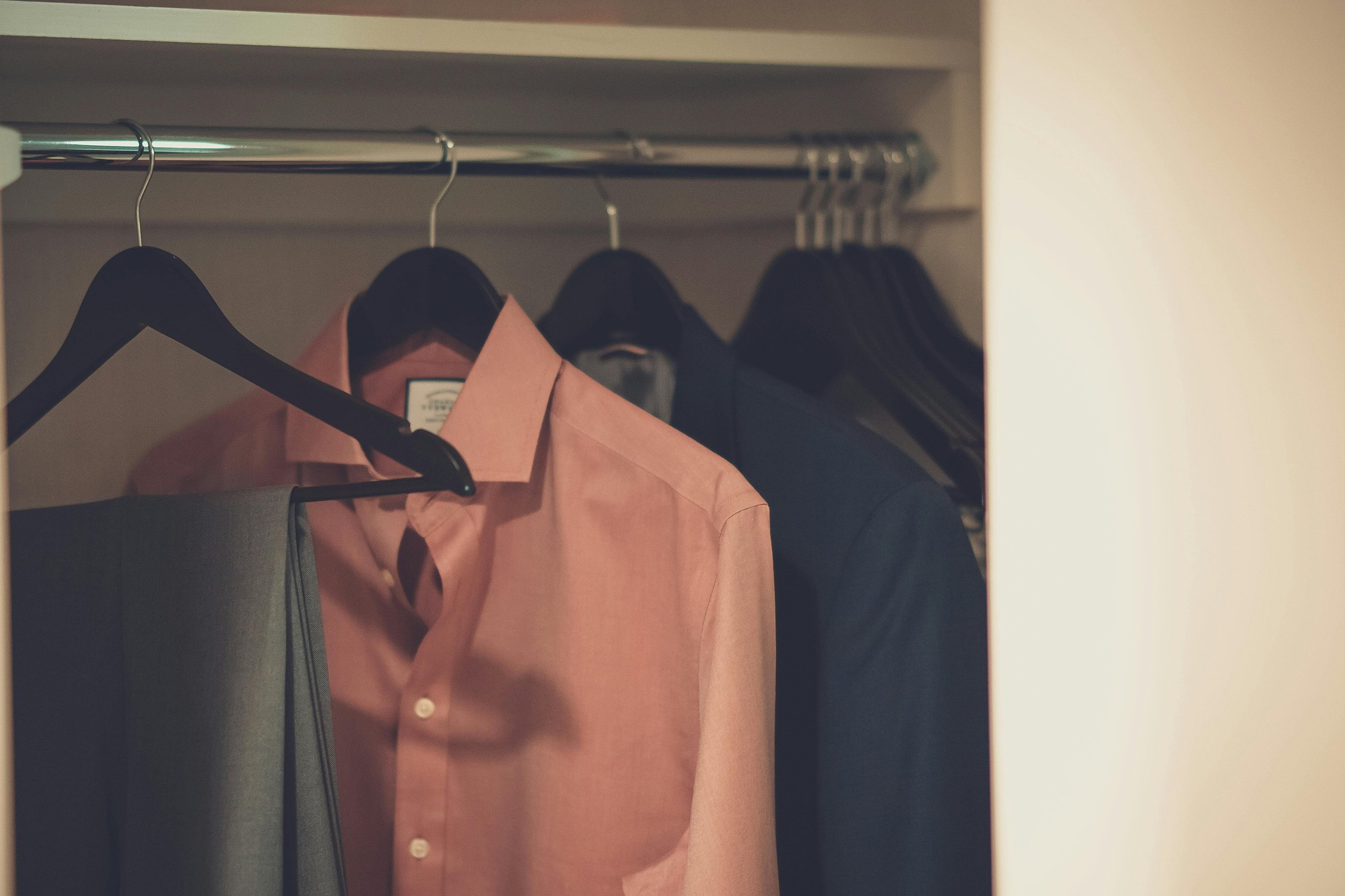Declutter Your Closet & Your Mind
Clear out the chaos! Learn how decluttering your closet can simplify your life, reduce stress, and bring clarity to your daily routine.
You stand in front of your wardrobe, staring into a sea of clothes. Yet, you have absolutely nothing to wear. If this sounds like your morning routine, you are not alone; it's a frustrating feeling that can start your day with stress. You'll learn that the path to a calmer morning and a clearer mind can begin right inside your closet with these practical declutter tips.
Tackling that overstuffed space can seem like a huge project, but it does not have to be. This decluttering guide will walk you through the closet decluttering process step-by-step. These are not just quick fixes; these are sustainable declutter tips that will change how you feel about your clothes and your space for good.
Why a Cluttered Wardrobe Drains Your Energy
It might seem dramatic, but the state of your closet really does affect your mind. Think about how many small decisions you make before you even have your first cup of coffee. A disorganized wardrobe adds a layer of what experts call decision fatigue, making you feel overwhelmed before the day truly begins.
Studies have shown that making numerous choices, even small ones, can wear down your brain's ability to function. According to researchers, this can lead to making poorer choices as the day goes on. By decluttering clothes, you reduce the number of choices you face each morning, freeing up mental energy for more important things in your daily life.
Beyond decision-making, a physically cluttered environment can increase your stress levels. A Princeton University study found that clutter competes for your attention, making it harder to focus. This can leave you feeling anxious, which is no way to start your day.
If you are looking for a custom built or walk in wardrobe visit NZ Wardrobes.
The Preparation Phase: Setting Yourself Up for Success
Before you pull a single hanger out of your closet, a little preparation makes all the difference. Rushing into closet decluttering without a plan can lead to a bigger mess and a lot of frustration. Let's set the stage for a smooth decluttering process.
First, schedule a block of time to start decluttering. Depending on the state of your wardrobe, you might need anywhere from two hours to a full afternoon; some might even need a single day. Put it in your calendar like you would any other important appointment so you can see the project through to the end.
Next, gather your supplies. You will need a few large boxes or a sturdy bin bag. Label them clearly: Keep, Donate, Sell, Trash, and Relocate. The "Relocate" box is for items that have wandered into your closet but belong elsewhere in your home.
The "Everything Out" Method
This is the moment of truth when decluttering clothes. To really understand what you are working with, you have to start with a blank slate. That means taking every single one of your clothing items out of your wardrobe and putting it on your spare bed or the floor.
Yes, everything, including that pair of shoes you haven't worn in years. The sweaters piled on the top shelf, the shoes kicked into the corners, and the belts hanging on the back of the door all need to come out. This step might feel overwhelming as you watch the pile grow, but it is a critical part of the process that a professional organizer would recommend.
This method forces you to consciously evaluate each piece of clothing you own, rather than just shifting things around. Once your closet is empty, you get a rare chance to see the space itself. This visual shock of your entire wardrobe can be a powerful motivator to be thoughtful about what you allow back in.
Actionable Declutter Wardrobe Tips for Sorting
With your mountain of clothes ready, it's time to sort. This is where the real work happens, but your labeled boxes will make it manageable. Pick up one item at a time and decide its fate.
The goal is not to get rid of everything, but to create a wardrobe filled with clothes that serve you and make you feel good. When you're working through the pile methodically, don't overthink it; try to go with your initial gut feeling about each item. If you're decluttering and feeling lost, these questions will help.
Asking the Right Questions
For each piece of clothing, you need to be a gentle but firm detective. Your job is to figure out if an item has earned its place in your newly organised closet. Ask yourself these honest questions as you pick up items you're considering:
Do I love this? This is the most important question, inspired by the great Marie Kondo. If your immediate reaction is not a strong "yes," it probably needs to go. Your favourite items should make you feel confident and happy.
Have I worn this in the last year? Be honest with yourself. If an item survived a full cycle of seasons because you didn't wear it, it is unlikely you will wear it in the next cycle. For pieces you haven't worn in a long time, it's time to let go.
Does this fit me right now? This is about your current body, not a future one. Keeping clothes that don't fit in the hopes you might lose weight can make you feel guilty every morning. Your wardrobe should support who you are today, so let go of clothes that don't fit.
Is this comfortable? That scratchy sweater or those jeans that dig in at the waist are not doing you any favors. Comfort is a huge part of feeling good in what you wear regularly. If an item isn't comfortable, you won't reach for it.
Does this reflect my current style? Our tastes change over time, and that's perfectly okay. It's good to let go of styles that represent a past version of you, like a leopard print top you bought on a whim but never wore.
Is this item in good condition? Look for stains, holes, pilling, or fading. If it is beyond repair, it is time to say goodbye and put it in the trash pile. Don't feel bad about parting with worn-out pieces.
Dealing With the "Maybe" Pile
You will inevitably come across items that are hard to decide on. These are the pieces that do not get a clear "yes" or "no." This is where a "Maybe" box can save you from decision paralysis when you're decluttering.
Place these uncertain items into a separate box. Seal it, label it with a date six months from now, and put it somewhere out of sight, like the garage or a storage area. If you find yourself needing something from that box within the six months, go ahead and retrieve it.
But if the six-month mark arrives and you haven't thought about what is inside, you have your answer. Donate the entire box without opening it again. This little trick takes the pressure off making a permanent decision in the moment, so don't worry about getting it perfect on the first pass.
Handling Sentimental Items
Some clothes are more than just fabric; they carry memories. This could be a t-shirt from a favorite concert or a dress worn on a special occasion. It is completely normal to have an emotional attachment to these pieces, and you shouldn't feel bad about keeping clothes with meaning.
These items don't have to clog up valuable real estate in your everyday wardrobe. If you can't part with them, give them a special place to store items like these. Create a memory box or a dedicated storage container for these sentimental clothes, honoring their importance without letting them interfere with your daily routine.
What to Do With the Decluttered Piles
Once you've decided what to keep, you'll be left with piles for donating, selling, and trashing. Handling these unwanted items properly is the final step in your clothes clear out. Don't let these bags sit in a corner for weeks; take action right away to complete the decluttering process.
The trash pile is easy; it's for items that are stained, ripped, or too worn to be useful to anyone else. For the others, you have a couple of good options. You can create a donate pile for a local charity or try selling clothes online or at a consignment shop.
Deciding whether it's worth the time selling an item can be tricky. A good rule of thumb is to only sell items that are in excellent condition, are from a popular brand, or are unique pieces someone might be searching for. Otherwise, your time may be better spent just adding them to your donate pile.
It's time-consuming to photograph, list, and ship items. There's no guarantee items will sell.
Ultimately, it doesn't matter which you choose, as long as you get the items out of your house. The goal is to create a clutter free space. Just don't let the decision of what to do with the items you're letting go of prevent you from finishing the job.
Reorganizing Your "Keep" Pile Like a Pro
You have made the tough decisions. Now comes the rewarding part: putting your "Keep" pile back into your clean, empty closet. This is your chance to create an organised closet that is easy to use and maintain.
Before anything goes back in, give your empty closet a good cleaning. Wipe down the shelves, dust the hanging rods, and run the vacuum. Starting with a completely fresh space feels amazing and sets a new standard for your decluttered closet.
Don't just throw everything back in. A little strategy here will save you so much time later. You want to organize your clothes in a way that makes sense for your lifestyle, creating a system that's easy to stick to long after laundry day.
Categorize Everything
The golden rule of organization is to group like items together. Put all of your pants in one section, your shirts in another, and your sweaters somewhere else. Following these clothes steps makes finding specific items incredibly easy.
You can even take it a step further by sub-categorizing within each group by clothing categories. For example, arrange your shirts by sleeve length, from tank tops to long-sleeved blouses, or create a specific jeans pick section. Many people also find it helpful to organize each category by color, creating a visually pleasing effect that also helps you locate things faster.
For smaller items in drawers, like socks or accessories, consider using drawer dividers. This prevents everything from becoming a jumbled mess. A well-organized system for your wardrobe pieces means you'll know exactly where everything is.
Upgrade Your Hangers
Mismatched hangers create visual chaos and can take up more space than necessary. Investing in a set of uniform, extra hangers is a small change with a massive impact. Slim velvet hangers are a great option because they save space and their non-slip texture keeps clothes from falling to the floor.
When you hang your clothes, face all the hangers in the same direction. It is a tiny detail that makes your closet look much more tidy and professional. You will be surprised at how much calmer your wardrobe feels with this one simple switch.
Maintaining Your Clutter-Free Wardrobe
Decluttering your wardrobe is a fantastic achievement. But the real challenge is keeping it that way. Creating new habits will stop the clutter from creeping back in over time.
This does not mean you can never enjoy buying clothes again. It just means being more intentional about what you bring into your space. These new habits will become second nature after a while, helping you maintain a minimalist closet.
The "one in, one out" rule is one of the most effective habits to adopt. For every new piece of clothing you buy, you must choose one existing item to donate clothes or discard. This practice forces you to consider each new purchase carefully and prevents your closet from becoming overstuffed again.
Another helpful habit is the seasonal switch. If you live somewhere with distinct seasons, you likely do not need your heavy winter coats taking up space in July. Store off-season clothes in vacuum-sealed bags or under-the-bed containers to free up space for what you actually wear and love wear.
You might even consider building a capsule wardrobe. This is a collection of a few essential, versatile items that can be mixed and matched to create numerous outfits. With foundational pieces like classic blue jeans and simple black leggings, a capsule wardrobe simplifies getting dressed and reduces the urge for impulse shopping.
Getting your closet in order is about so much more than just tidiness. When you follow these declutter wardrobe tips, you create a space that feels calm and supportive. You will save time, reduce daily stress, and feel more confident in the clothes you choose to wear.
Remember that this is a journey, not a destination, especially if it felt overwhelming at first. Your style and needs will continue to evolve, and your wardrobe can evolve with you. I've decluttered my own closet many times, and each time it brings a renewed sense of clarity.
By using these simple declutter wardrobe tips, you have the power to maintain a closet that brings you joy instead of frustration. You've decided it's time for a change, and now you have the ultimate guide to make it happen. Enjoy your new, organised space.








